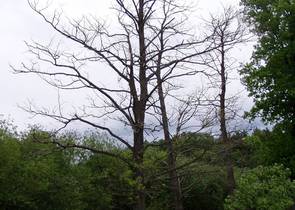The Journal is published by the Nature Conservation Agency of the Czech Republic in cooperation with the Cave Administration of the Czech Republic, the Krkonoše Mts. National Park Administration, the Bohemian Forest Mts. National Park Administration, the Podyjí National Park Administration and the The Bohemian Switzerland National Park Administration. It has been published since 1946.
cs / en
Nature Conservation 5/2008 — 21. 10. 2008 — Nature and Landscape Management
Endemic Decline in Alders in the Czech Republic

Decline in alders in riparian growths has been recently spreading in the Czech Republic. The issue also deals, i.a., with nature conservation, because the growths are also generally or specially protected, after having become a part of Significant Landscape Elements or small- and large-size Specially Protected Areas, the European Community Natura 2000 network respectively.
The alder growths often plays important role within the Territorial System of Ecological Stability of the Landscape, a multi-level national ecological network. The phenomenon is caused by an invasive hybridogenous Phytophthora alni, which spreads by water and can cause serious damage to or almost the total destruction of alder riparian growths, particularly where alders prevail. Along some watercourses, alder growths have been seriously and more or less continuously infected: such linear growths, e.g. along the Úslava or Lužnice Rivers, can reach many dozens of kilometres. Infected trees die or are so heavily damaged, that their stabilizing function is, due to damage to roots, substantially reduced. Against Phytophthora alni, no immunodefense mechanisms have been evolved in alders in the Czech Republic. Underestimating the disease development and further spreading of the pathogen in new river basins/watersheds shall result in serious economic, landscape management and in some cases also in ecological damages. The most serious affects will be caused in the growths along smaller and medium watercourses with loose bank soils, where the bank stability is based on alder root systems and where flow rates substantially fluctuate in the course of the year. The damages can reach up to hundreds of thousands of euros. Because there have been no effective management and care measures, spreading the pathogen should be prevented in river basins/watersheds, where it has not been occurring yet.

